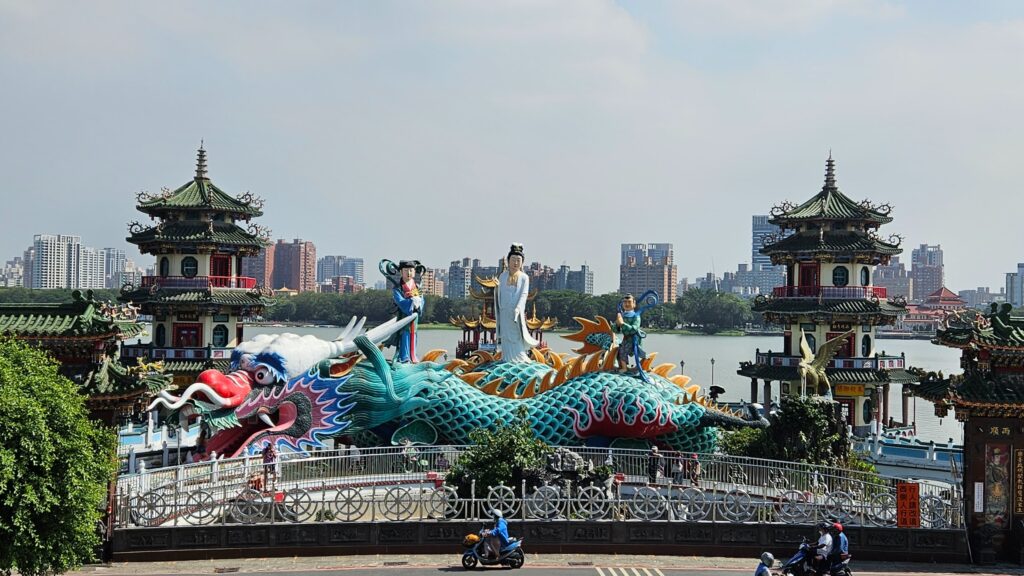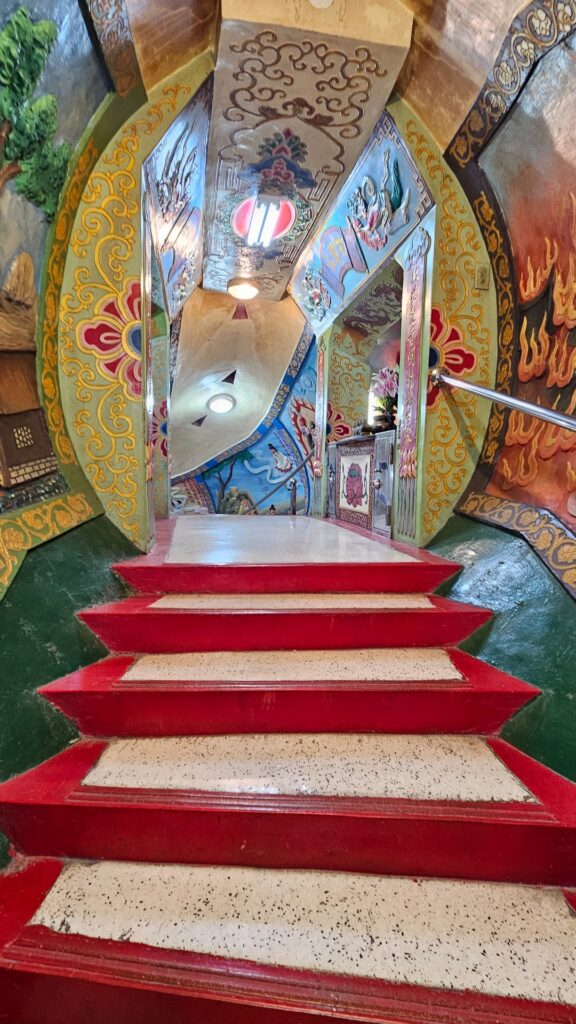
DAY 13
(Reading time: 4 minutes)
A beautiful morning started right at our Formosa Boulevard metro station, where you can see the so-called Dome of Light. It’s an impressive underground installation made of colored glass, under which several times a day short visually captivating videos are projected on the floor – running/floating animals, the beauty of nature, or sequences of world-famous artworks. We saw the latter, and since we are lovers of art galleries, we competed to guess the name of the painting and its painter.

Another pleasant surprise followed at the exit station. We discovered a “mobile” library – an amazing idea!


The plan for the day was to visit Lotus Pond, an artificially created lake, which is a sought-after place boasting with many temples around its perimeter. Three of them attract special attention with their extravagant appearance:
Zuoying Yuandi Temple
Spring and Autumn Pavilions
Dragon and Tiger Pagodas
Zuoying Yuandi Temple immediately catches the eye from a distance with its huge statue of a Taoist god Ziwei (Beiji Dadi). Devotees worship him for his miraculous abilities to drive away evil and heal diseases. What impressed me the most was his superpower to look perfectly photogenic from every angle.
Spring and Autumn Pavilions feature a primeval dragon, on whose back stands Guanyin, the goddess of mercy.

You can enter the dragon’s mouth, walk through its body and see painted carvings inside – scenes from Buddhist sutras…


… and exit through the dragon’s ass. For good fortune.

We then climbed up the stairs to the temple and discovered its beautiful interior: marble carvings, lions, a fountain of nine dragons, and a shrine with Kuan Kung, the god of war, as well as Buddha and Confucius.
Crossing the zigzag bridge, you reach the Dragon and Tiger Pagodas, the most popular structure on the lake. And since Murphy’s Law never fails, it was completely covered by scaffolding at that moment.

Fortunately, they left bodies of those two creatures accessible, so we entered through the dragon’s throat and exited through the tiger’s mouth, which is the correct order for good fortune. Inside both animals, you can find colorful carvings depicting figures from Buddhism and Taoism.
Tiger and dragon are sacred animals of Chinese Taoist philosophy, symbolizing the energies of yin and yang; complementary opposites. They are also two of the twelve animals of the Chinese zodiac. Tiger is the king of animals, representing strength, courage and justice. Dragon represents authority, prosperity and happiness. Both animals are equally powerful and intelligent, thus they are an integral part of decoration of almost every temple.

On the other, somewhat deserted, side of the lake, we found another interesting temple – Qingshui. Inside, we were allowed to take an elevator up to the terrace under the statue of a historically documented monk, after whom the temple is named.
On the way back to the metro, we stumbled upon a specialized market – almost half of the space was dedicated to selling apples. Apples are probably the most common fruit in our country, almost everyone grows them in their gardens, and sometimes we don’t even know what to do with them. However, in Taiwan (as well as in Japan and Korea), apples are rare and therefore expensive. They are sold individually, the large numbers on signs are prices in TWD for one apple.

-endy-
DONKEY’S SPECIAL:
-mj-